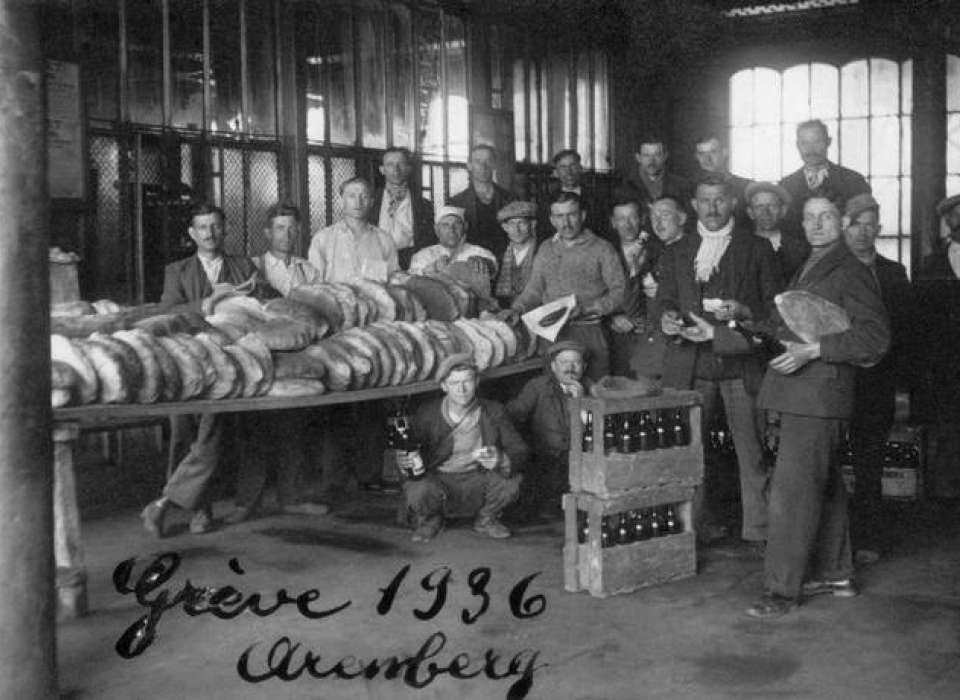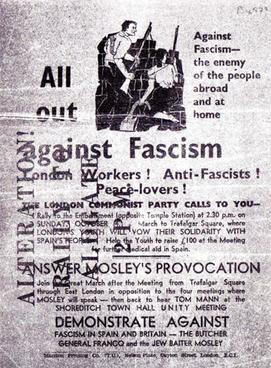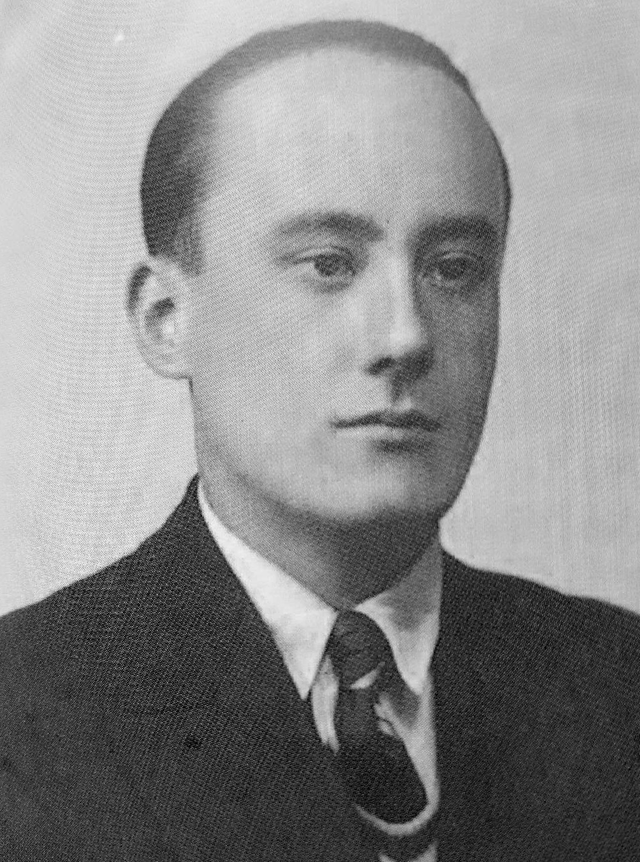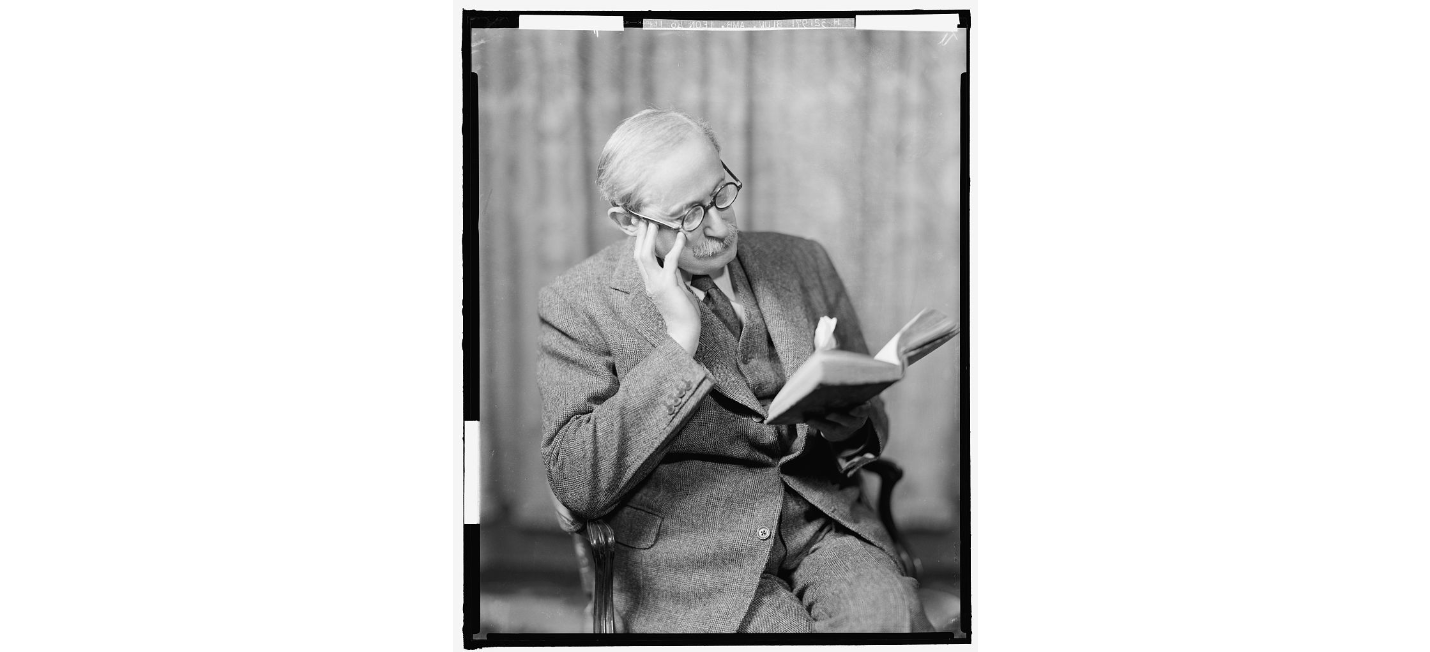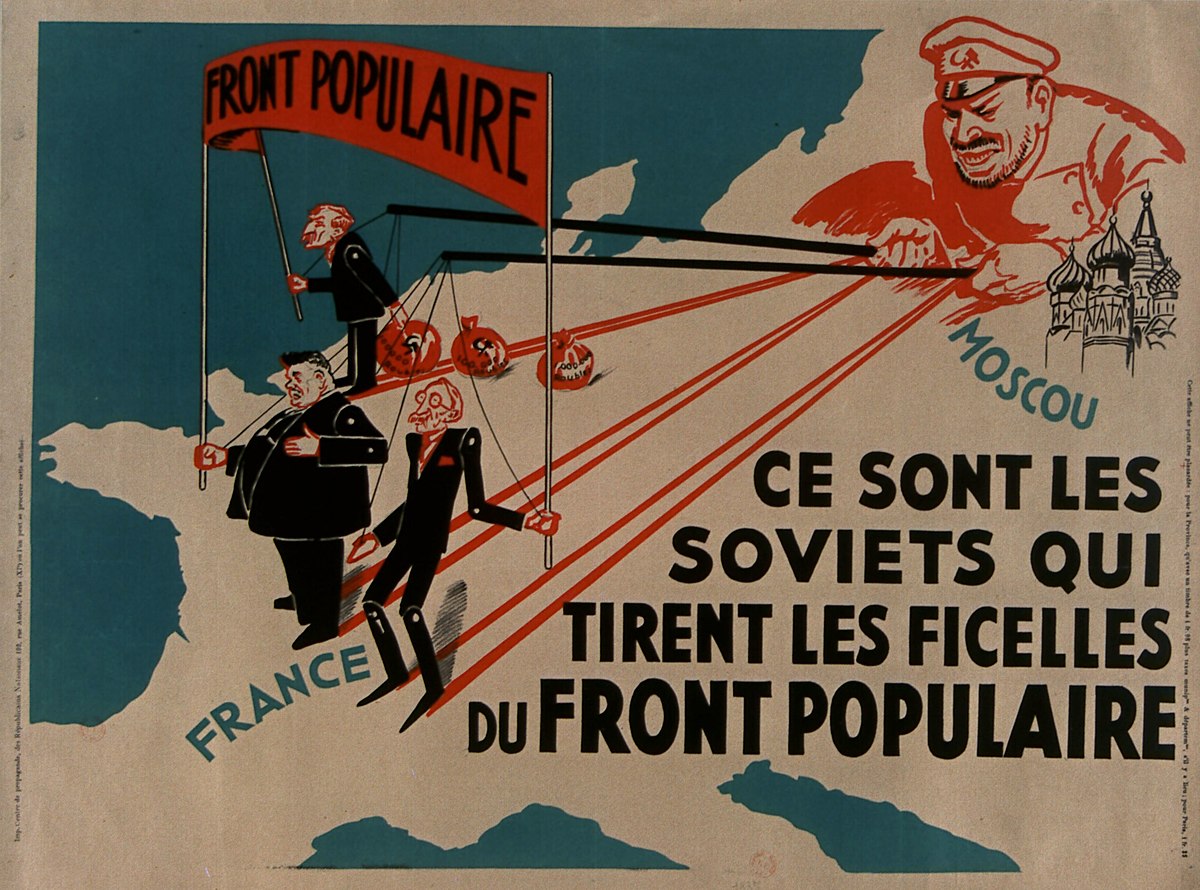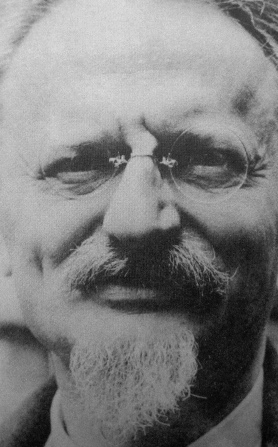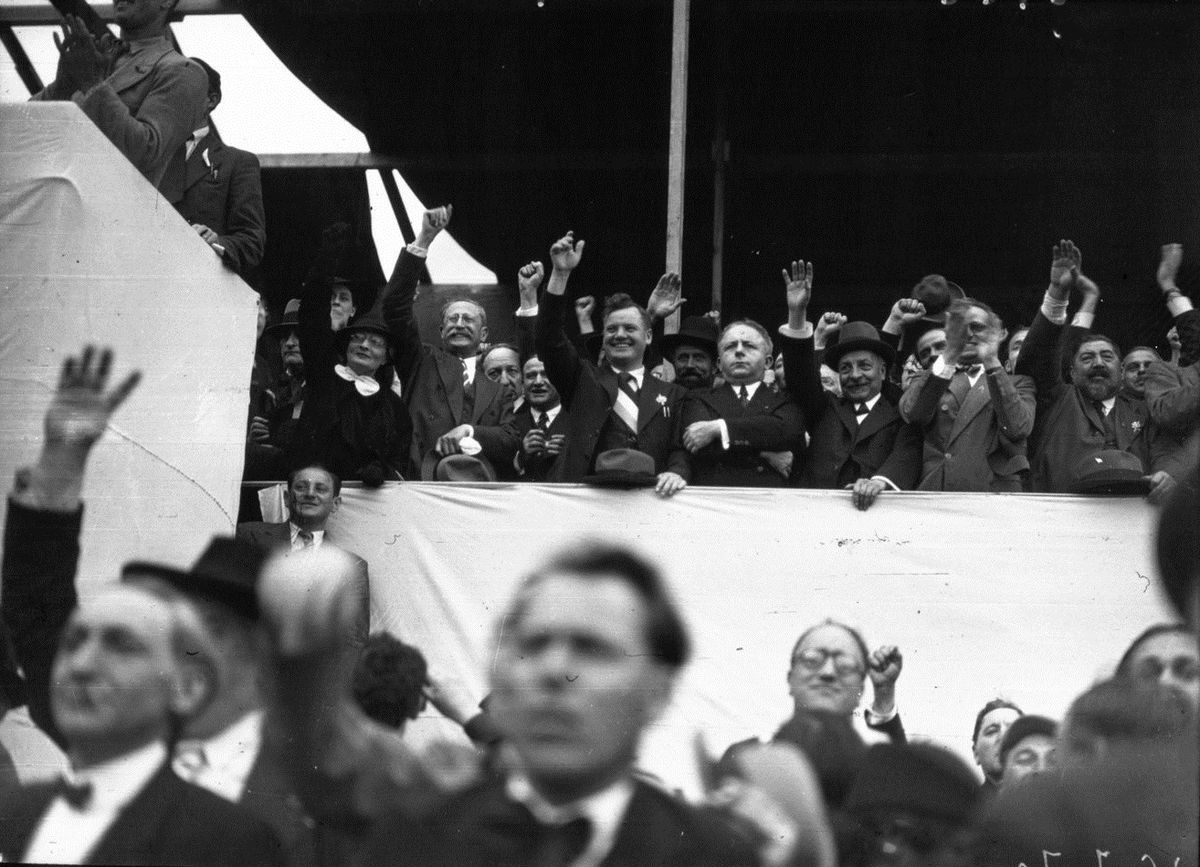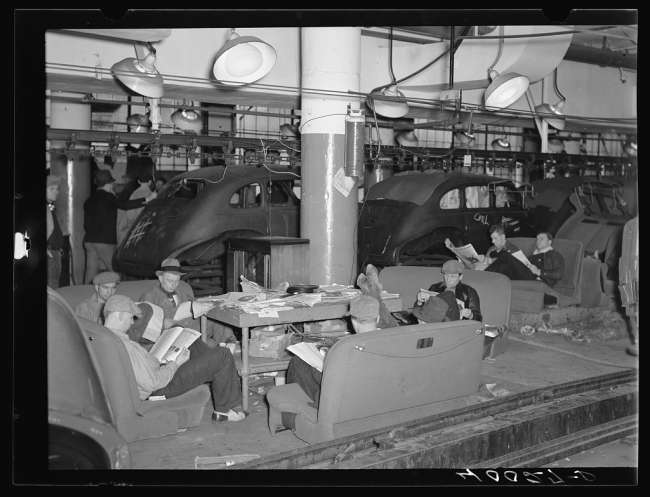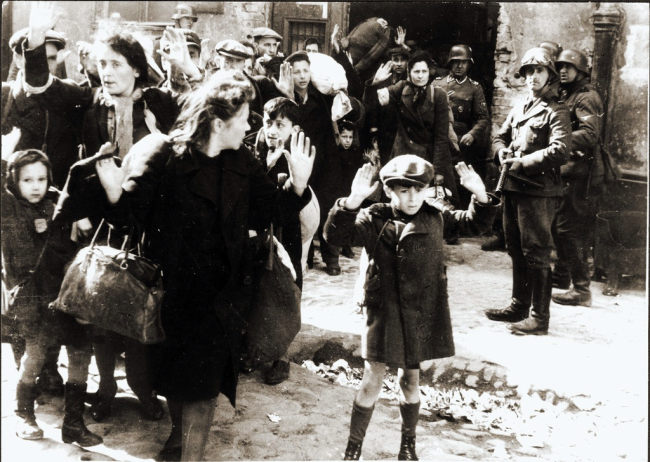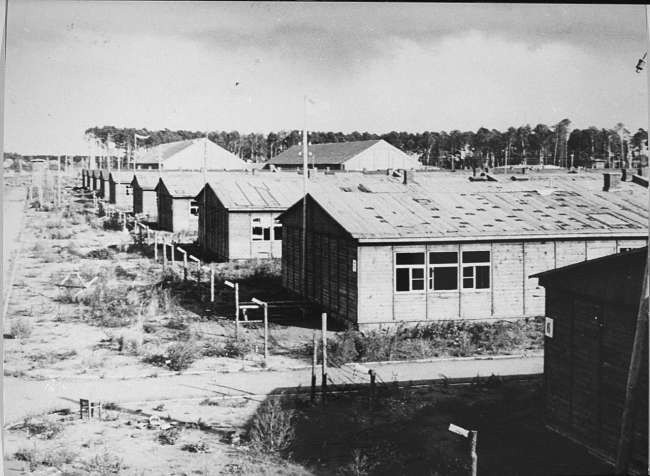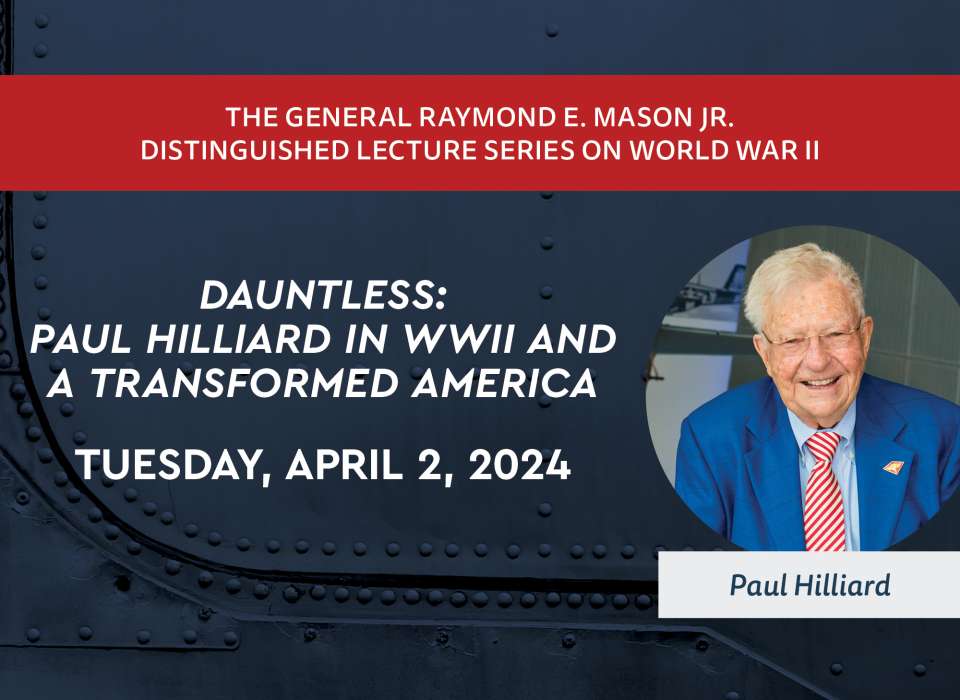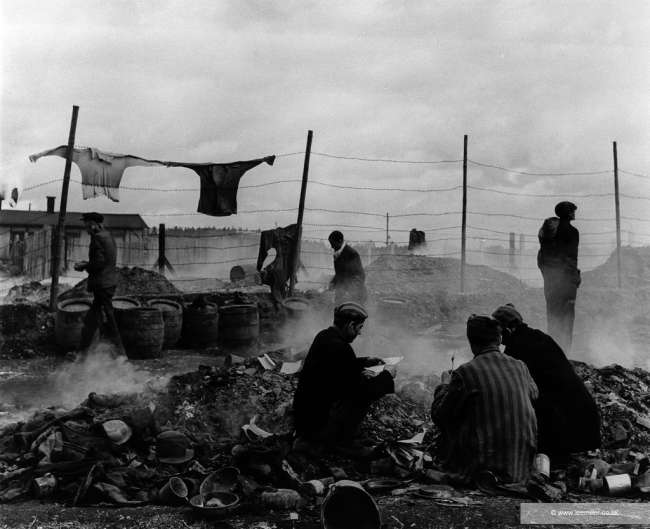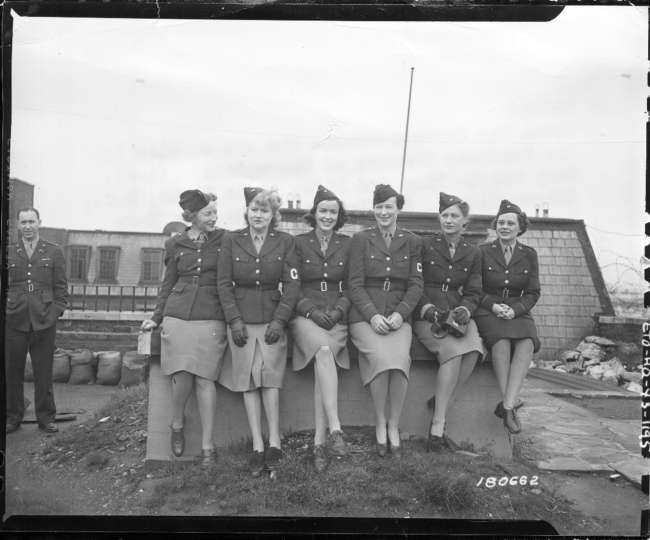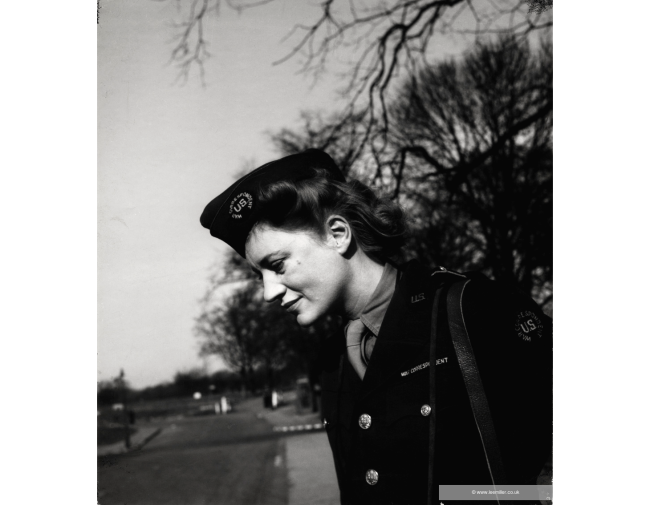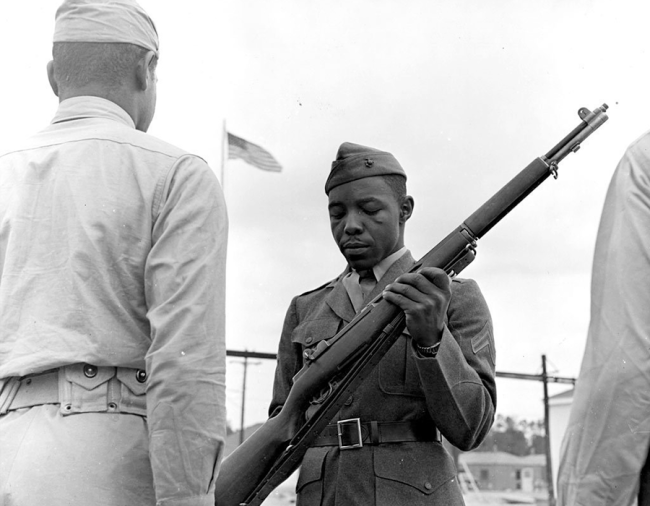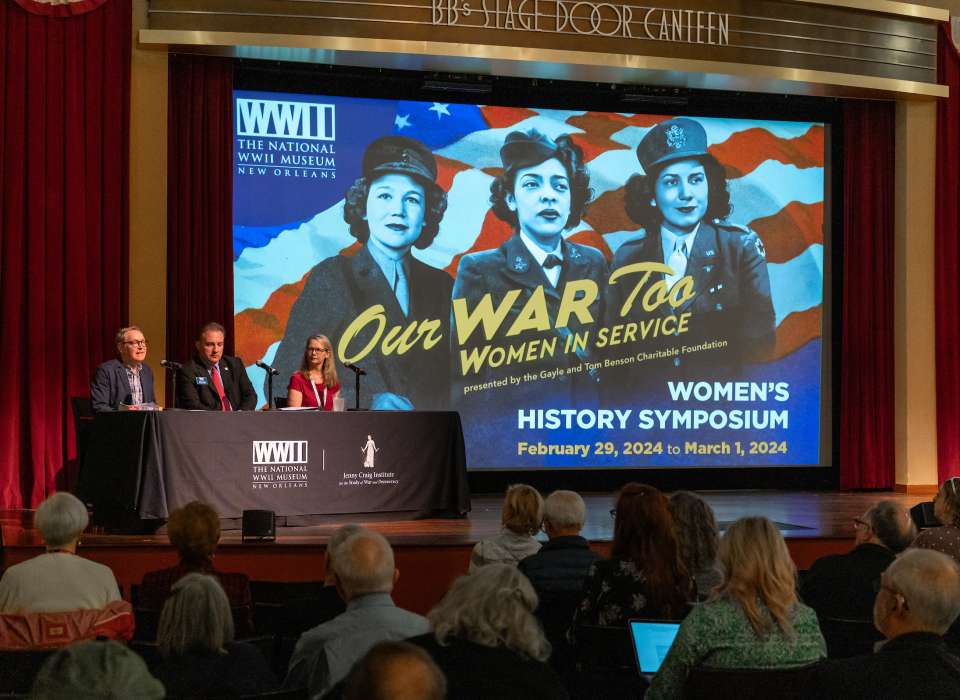Top Photo: Miners on strike in northern France in 1936. Author unknown. Courtesy of Wikimedia Commons.
Workers acting in unison precipitated massive social and political change in the United States in 1936. As we saw with the case of American labor and the reelection of Franklin Delano Roosevelt, strikes and demonstrations, combined with support for workers inside governmental structures of authority, could greatly enhance the political and economic power of the working class. The American case hardly stood alone, however.
Across northern and western Europe, 1936 was also a Year of the Worker. In Belgium, mass strikes that spring secured a minimum wage, a right to form unions, paid vacations, and the 40-hour workweek. In October, in Norway, the Labor Party claimed well over 42 percent of the vote in the parliamentary elections; the runner-up, the Conservatives, got just half that number. That same month, Oswald Mosley and the British Union of Fascists staged a march in London’s East End, an area with a large Jewish community. After British Home Secretary Sir John Simon declined to ban the march despite a petition from the Jewish People’s Council with 100,000 signatures, young Jewish men, trade unionists, Labour Party members, and Communists organized to confront Mosley and his black-shirted thugs with their police escort. During several clashes on October 4 in the East End, especially the famed “Battle of Cable Street,” these anti-fascists, frequently chanting “They Shall Not Pass” (a slogan borrowed from Spanish Republicans then battling Francisco Franco), taught a lesson in violence to the Fascist apostles of violence they would never forget.
In Europe, however, the two most significant instances of workers’ movements mobilizing and converging with national political developments were France and Spain. The Spanish case is an example where many workers embraced revolutionism in the wake of the revolt against the Second Republic launched by Franco and others. Consequently, it deserves separate and distinct treatment.
Here, I want to examine 1936 in Third Republic France, a year in that country’s history forever associated with the election of the Popular Front government and factory occupations. These events molded French politics and society in fundamental ways not only throughout the war years which followed but well into the 21st century.
The Great Depression, the catalyst for Roosevelt’s electoral victories in 1932 and 1936 and the explosion of American worker activism in 1936, had not really hit France until 1931. Before that, public expenditures remained high, there was little unemployment, and prices seemed stable. After 1931, the economic downturn dramatically affected the country. Revenues sharpy declined, unemployment rose, and the 1932 elections ushered in a government committed to cost-cutting. Failure to cause some immediate improvement led to enormous instability with more than half-a- dozen men holding the position of prime minister in France in 1932–33.
With an eye to what occurred in the United States in 1936, it should be noted that the threat of fascism already weighed far more heavily on the French working class than it did on the American. In early February 1934, right-wing paramilitary groups came frighteningly close to enacting a coup in Paris. A general strike a week later stabilized the situation temporarily. Still, quite justified apprehension about extreme right-wing organizations remained.
Across the Rhine, Adolf Hitler’s ascent in Germany and his hatred for the Treaty of Versailles certainly raised the threat of a new conflict. When Hitler sent German troops into the Rhineland on March 7, 1936, in clear violation of the Versailles Treaty, the French and British governments balked at military action. Combined with the Nazis’ suppression of leftist parties and trade unions, its heinous antisemitic legislation, and the open expansion of its military in the previous three years, the remilitarization of the Rhineland cemented French progressives’ fear of an existential menace to their east—and their readiness to confront it. The Popular Front bloc campaigning in French elections in the month after the Rhineland crisis did just that.
What did “Popular Front” politics actually entail? First, it is important to recall what the “Popular Front” replaced. From 1928 to 1934, the Communist International (or Comintern), headquartered in Moscow and now an arm of the Soviet state, adopted a perspective based on an assessment of the stability of global capitalism. Judging the latter to be on the cusp of a new and terminal crisis it called the “Third Period” (the first from 1917–23 had been a time of revolutionary upsurge following Red October, while 1924–28 had been a phase of capitalist stabilization and retrenchment), the Comintern called for a renewal of proletarian revolutionary militancy. Challenging bourgeois class power was demanded, and Comintern directives rejected cooperation with more moderate socialist elements. As is well known, in the context of the vehement anti-communism of movements like the Nazis, the Communist Party of Germany’s refusal to work with Social Democrats (an obstinacy mirrored in the latter), whom they termed “social fascists” and treated as an even greater peril than Nazism, spelled disaster for the German workers’ movement. Other examples could be listed here, but none so radically questioned the “Third Period” perspective as did the destruction of the organized German Left within six months in 1933.
This was not lost on leftists in France. The left-libertarian Daniel Guérin, encouraged by future Premier Léon Blum, had toured Germany in 1932 and 1933 in the hopes of understanding what German workers were up against. His extremely insightful reports from these trips conveyed disheartening news: the “disunity of the proletariat” and how “it took the tragic dénouement at the beginning of 1933—Hitler’s accession to power, the burning of the Reichstag, the outlawing of the Communist Party—before Moscow would authorize its subordinates to ‘renounce their attacks against the Socialist organizations during the period of common action.’ But by this time it was too late. Everything had already been engulfed by the Brown plague.”[i]
In point of fact, there were French communists and socialists, mindful of the catastrophe in Germany, who pushed for united anti-fascist action. July 1934 was a decisive month, when the Communists (PCF) and Socialists (SFIO) agreed to a unity pact. At the end of July, the two parties came together to commemorate the revered socialist politician, Jean Jaurès, assassinated in Paris on July 31, 1914, as he tried to stop the rush to war between France and Germany. Similar developments occurred in Spain and Belgium.
Undoubtedly, the Soviet Union’s willingness to abandon the disastrous intransigence of the “Third Period” in 1934–35 aided the regrouping of progressive forces in France—and around the world. In July 1935, the Bulgarian head of the Comintern and arch-Stalinist, Georgi Dimitrov, presided over the Comintern’s Seventh Congress in Moscow. There, Dimitrov in a widely cited remark affirmed the existing official interpretation of fascism as “the open terrorist dictatorship of the most reactionary, most chauvinistic, and most imperialist elements of finance capital.”[ii] This was a deeply problematic understanding of fascism. Nonetheless, the readiness to broaden the social forces in struggle against it and thereby seek allies outside of communist unions and parties was made clear. “In mobilizing the mass of working people for the struggle against fascism,” asserted Dimitrov (followed an egregious rewriting of recent history), “the formation of a wide anti-fascist People's Front on the basis of the proletarian united front is a particularly important task.”[iii]
Thus, the Seventh Congress of the Communist International signaled a stark reversal of “Third Period” politics. Within a “people’s front,” Communists would not only work with socialists and anarchists but also extend a hand of solidarity to liberals, pacifists, the religious, and even conservatives. If they professed and practiced determined opposition to fascism, working together was possible. Though it was not openly stated, the turn to Popular-Frontism also involved retreats from socialist internationalism and from the aim of social revolution. The “nation” and “national roads” to socialism/communism provided the sociopolitical frameworks of orientation. Plus, appeals to the middle classes in countries threatened by domestic fascist groups or aggression from the Axis powers soon became coupled with promises to protect property relations.
In the French case, three parties came together in 1935 to comprise a Rassemblement Populaire or Popular Front bloc: the Socialists, the Communists, and the Radical-Socialists. The latter, a quite moderate party, despite its name, participated, jointly, in Bastille Day celebrations that year. Joseph Stalin signed a defensive treaty with France in May, adding extra momentum. Eventually, 10 organizations rallied to the idea of a Popular Front, the most important outside of the three parties being the General Confederation of Labor (CGT), the largest French union. The increasingly unpopular government of Pierre Laval (who was later tried and executed for his role in the Vichy order), who combated the economic downturn with deflationary measures, greased the skids, too, for pulling together a common platform.
Announced to the public on January 11, 1936, the Popular Front Platform proclaimed that “democracy is invincible once it rediscovers its creative force and power to attract.” It addressed the need for strong measures against the extreme right, i.e., the “disarmament and dissolution” of “fascist leagues.”[iv] Simultaneously, the Platform spoke of the necessity for an expansion of freedom of the press and the safeguarding of a secular public educational system. In terms of foreign policy, it embraced a notion of collective security (explicitly promoting the 1935 Franco-Soviet pact as a model). While clearly not advocating independence for France’s colonies, members of the Popular Front sanctioned the constitution of a committee of inquiry in Parliament that would undertake a thorough investigation of conditions in the French Empire, foregrounding the cases of Indochina and North Africa.
As far as socioeconomic transformation went, the Platform included the demand for public works programs to ameliorate unemployment and the creation of a national unemployment fund. It explicitly backed away from social radicalism, promising only to nationalize armaments firms, regulate more firmly banking and finance, and restructure the Bank of France by imposing popular control over it.
The boldest part of the Platform was the dramatic expansion of the power of trade unions. Section I insisted on “trade union freedom for everyone” and acknowledged the rights of women workers.[v] In Section III, a demand for a shortening of the work week without any reduction in pay stood out. This was the Popular Front’s strongest imposition on the domain of capital.
Cloaked in the proud and impressive history of the revolutionary France of 1789–94 (Maurice Thorez, the leader of the PCF, brandished the record of the Jacobins), of the 1830 and 1848 Revolutions, and of the Paris Commune, the Popular Front ticket vigorously fought to win over voters. A Popular Front government had already triumphed in Spanish elections in February. Now their neighbors to the north seemed poised to do the same.
French citizens headed to the polls on April 26, then again on May 3 for a second round. More than 80 percent of the nation participated, demonstrating just how consequential Frenchmen (women did not yet have the right to vote) understood the election to be. For the country’s left, it was a victory that was generational in character and scope. The Popular Front received 59 percent of the vote. Out of 618 seats in the Chamber of Deputies, the Popular Front claimed some 370 of them, a stout majority. If the Radicals’ numbers fell sharply (from 157 seats in 1932 to 109) and the Socialists experienced a real increase (from 129 to 149), Thorez and the Communists surged. The “red belt,” the suburbs that had emerged around Paris in the 1920s, a decade of industrial expansion for the metropolitan area, came out fervently for the Communists. They now held 72 seats (after winning 12 in 1932). Despite Blum’s entreaties, Thorez and the Communists chose not to accept ministerial positions. Support from the Communists for the new government, however, was unambiguous.
On the heels of such a triumph, Blum became premier (the past and future Radical premier, Edouard Daladier, served as vice premier under Blum). As the first socialist and Jewish premier in France’s history, Blum entered office at the age of 64, but he was hardly an unfamiliar face in French politics. Bespectacled and refined, Blum epitomized the intellectual in politics. His reputation for intellectual sophistication did not signify, though, aloofness. Becoming a socialist in the late 1890s, he had witnessed the Dreyfus affair, with all its foul antisemitism. Like for so many of his generation, socialist politics in France were embodied by Jean Jaurès, whose ability to navigate a parliamentary path in French politics while finding common ground to work with and earn the respect of revolutionaries like Rosa Luxemburg and Leon Trotsky left a deep impression on Blum. Unlike many other reformist socialists, Blum did not disavow Marxism; he even offered quite prescient commentaries on the distinctions between the “conquest of power,” the “exercise of power,” and, the “occupation of power” (the latter supplied a conceptual means for him and the Socialists to pursue a defensive posture against fascism).
Seeing the majority of his party leave at the 1920 Tours Congress in order to found the Communist Party of France, Blum contributed to the reinvigoration of the Socialists in the late 1920s and early 1930s. In these dark years, he did not need to be convinced about the dangers, inside and outside France, of fascism: Right-wing goons beat up Blum in mid-February 1936. Battered but far from defeated, he would now lead France in this perilous international moment and with a country rapidly torn by class conflict.
With preparations underway for the Popular Front to rule, workers intervened, transforming the whole dynamic of French national life for months. The place of inception was Le Havre, home to Bréguet Aviation. On May 11, just a week after the finalization of election results, Bréguet workers occupied the aircraft plant after two men were fired. Daring and fraught with risks, the action compelled Bréguet to reinstate the men and recognize their employees’ desire to unionize. In this case, the union was the CGT. Unafraid to mimic the success, labor in France sensed that capital was on its heels after the counting of the votes and seized the initiative.
Historians often refer to a “strike wave” that commenced in aircraft factories in Le Havre and then Toulouse and Courbevoie. But French workers did far more than just strike that spring. Feeling emboldened that a government of “theirs” was about to assume power, they occupied their workplaces. The mirroring of the actions of American workers is amazing, forming a true “moment” in the late interwar period.
According to Julian Jackson, whose 1988 monograph on the Popular Front still commands respect, the Popular Front “was partially a revolt of the working class against a social order which excluded it from political power, partially a revolt of the young against a political order which seemed hidebound and unimaginative.”[vi] These elements co-mingled in the factory occupations. Exhilaration and confidence showed in the faces of workers, particularly younger ones. When cameras were close, they often raised their fists, always a sign of proletarian defiance. Humor was not absent either. An Australian journalist, covering the strike wave, reported, “an amusing sidelight on the situation is provided by their [the workers’] insistence that such directors as attend [checking on the occupied factories] shall sign the time-book or punch the time-clock, in token of their punctuality.”[vii] In general, machines were not damaged, showing a form of solidarity tempered by discipline.
On May 24, 600,000 marched in remembrance of the Paris Commune, commemorating the thousands of Communards slaughtered when troops under the command of the Versailles government stormed the capital during “Bloody Week” in 1871. Photographs from that day show Blum walking arm-in-arm with other marchers to the Mur des Féderés (Wall of the Federals) in Paris’s Père Lachaise Cemetery, where more than 100 supporters of the Commune were shot down and thrown into a mass grave 65 years before. It appeared that the new government, not yet in office, would proudly lay claim to the experiment in socialist governance that was the Paris Commune.
All the while labor unrest increased. Workers laid down their tools at the Renault plant at Billancourt, a suburb of Paris, on May 28. Operations halted in most industry around Paris as 70,000 men struck by the 29th and 30th. Management quickly approached metallurgical workers with requests for negotiating a collective bargaining agreement. A brief respite in at the end of May and very beginning of June did not last though.
Refusal to work defined France in June 1936 when the unruliness demonstrated by French workers reached a kind of crescendo. That month, the number of strikes exceeded 12,000. More than two-thirds of them were factory occupations. Spreading across the nation and leaving few occupations intact (the railways and post offices were some of the significant exceptions), worker militancy recast France into a nation on strike. Printers, locksmiths, and office workers, miners, engineers and department store clerks, hotel staff, waiters, and textile workers, despite their different backgrounds, withdrew their labor power from the circuits of the national economy. Caen, Marseilles, and Calais were among the municipalities that joined Paris, Le Havre, and Toulouse in this onslaught of dissent. Ultimately, more than 2,000,000 workers participated—nothing like this transpired again in France until the spring of 1968. Labor leaders, like Leon Jouhaux of the CGT, much less the capitalists, had not anticipated the number and strength of the strikes.
Conservatives and others on the French Right were terrified. Many howled about the strikes as the prequel for a Communist coup. Propaganda depicting Blum and the Popular Front to be Moscow’s puppets was disseminated; more than a few figures in French right-wing politics uttered the ultrareactionary and treasonous words: “Better Hitler than Blum.”
Others who observed the events in France from afar greeted the wave of strikes. The most important of them was Leon Trotsky. Trotsky had lived in France, in exile, from July 1933 until June 1935, when he was compelled to leave and seek refuge in southern Norway. A fierce and trenchant critic of the entire Popular Front strategy emanating from Moscow as counterrevolutionary, Trotsky monitored the occupations of the factories from his home near Oslo. “Two or three times a day,” he admitted to his supporter, Victor Serge (who recently had been freed by the Stalin regime and allowed to leave the USSR), “I turn on the radio to listen to the birth-pangs of the French Revolution. A massive strike like this is undoubtedly the beginning of a revolution.”[viii] The genesis of proletarian revolution in France surely had to be reducing Blum, Jouhaux, and other members of the Popular Front to fear and trembling, Trotsky believed.
Though his enthusiasm was understandable, Trotsky deeply misread the situation. The French labor movement did not seek the overthrow of capitalism and the state. Intuiting the reformist core within the revolutionary shell, Serge, writing from Brussels, attempted to tone down Trotsky’s expectations. After only a few months back in Western Europe, he had come to grips with the organizational weakness of the International Left Opposition, the term which Trotsky and his supporters (along with “Bolshevik-Leninists”) preferred at this point, in the workers’ movements in Belgium and France. In his response, he cautioned Trotsky, “In such a situation one may hope for anything, so long as one does not expect an immediate all-round upsurge. This is the beginning, the first step out of bed, which indicated the recovery of the patient,” after years of political atrophy.[ix] The “full recovery” of the working class in France “may take several years,” Serge warned.[x] Developments in June would enrage Trotsky, who inveighed against the lack of revolutionary leadership on the French Left, and would confirm Serge’s prudence.
Representatives of the employer class were ready to talk, then, in early June with the new Popular Front government as soon as it entered office. Blum summoned them to the Hotel Matignon in Paris on June 7 to chart with him and representatives of the CGT a path forward. The outcome, the Matignon Agreement, made history.
French workers won the right to join unions, elections for shop stewards, collective bargaining, and significant pay increases (7 percent to 15 percent). For the CGT, the strikes created a new world of mass unionism. Its membership climbed from 778,000 when the strike wave started, to roughly 4,000,000 by March 1937.
Workers attained a 40-hour work week and two weeks of paid vacation a year as well. These were, unequivocally, breakthroughs in working-class politics, not only in Third Republic France but globally. With such gains secured, the laboring population of France and their families flocked to their countries’ beaches and spent their vacations elsewhere in Europe—and beyond. To quote Geoff Eley, these “new paid holidays” entailed “disrupting the established topographies of social privilege.”[xi] Hence forward, workers would staunchly defend these major advances in their free time (as they later would fight for pensions). Leisure would no longer belong exclusively to the ruling classes. And working-class men, women, and children would relax on the beach or in the French countryside with less stress on their finances thanks to inexpensive train fares inaugurated by the Socialist Under-Secretary of Youth and Leisure, Léo Lagrange. There was ample reason on the French Left for optimism.
A climactic moment in the aftermath of the Matignon Agreement was July 14, Bastille Day. A million ebullient people crowded Paris’s streets for the holiday. The British Marxist historian Eric Hobsbawm, remembered for his four-volume history of the modern age and his studies of the development of industrial capitalism, was there. Accompanying a newsreel team sent by the Socialists, the 19-year-old Hobsbawm was captivated by the masses of human beings celebrating this key anniversary of the French Revolution amid a new and exciting sense of what was possible politically. In his memoir, Interesting Times, he recalled “the red flags and tricolors, the leaders, the contingents of workers” he encountered: “The whole of popular Paris was on the street to march—or rather to perambulate between endless waits—or to watch and cheer the march, as families might cheer departing newlyweds.”[xii] Fireworks that night concluded a quite jubilant Bastille Day in the City of Light.
“For a brief moment,” Hobsbawm said, “France became not only the refuge of civilization, but the place of hope.” [xiii] For all its seeming radicalism, though, the results of the victories of the Popular Front and French organized labor in the spring and summer 1936 largely echoed American developments. As the late Albert Lindeman, a scholar of European socialism, characterized it, “the program of the Popular Front, while appearing drastic in the context of French history, did not differ fundamentally from FDR’s New Deal—something that Blum openly recognized.”[xiv] Most strikers resumed work by August at the very latest, just as France’s attention turned south to Spain, engulfed by social revolution and civil war that summer.
Indeed, perhaps it is better to categorize the Year of the Worker in France as, following Thomas Beaumont, an “experiment in industrial social democracy.”[xv] Reformism carried the day in both the United States and France. The liberalism of the New Deal coalition and industrial social democracy emerged as alternatives to the fascist and Stalinist systems. They both enjoyed enormous working-class support and marginalized revolutionaries demanding radical transformation of the capitalist system. As such, both currents warrant far more study and debate.
Ideas of anti-fascist unity, democratic institutions, and social solidarity associated with the New Deal and Popular Front would be tested mightily as the international situation deteriorated after 1936 and totally and violently collapsed in 1939. Nonetheless, these ideas would undergird the Grand Alliance against the Axis powers and resistance movements across Nazi-dominated Europe during World War II. And what they did to empower workers, within a more democratic and humanized capitalism, would unleash shock waves throughout the 20th century.
[i] Daniel Guérin, The Brown Plague: Travels in Late Weimar and Early Nazi Germany, trans. Robert Schwartzwald (Durham: Duke University Press, 1994), 65, 72.
[ii] Georgii Dimitrov, “The Fascist Offensive and the Tasks of the Communist International in the Struggle of the Working Class against Fascism: Main Report Delivered at the Seventh World Congress of the Communist International” (available at https://www.marxists.org/reference/archive/dimitrov/works/1935/08_02.htm). Italics in the original.
[iii] Ibid. Italics in the original.
[iv] “Programme of the Popular Front in France,” reprinted in Julian Jackson, The Popular Front in France: Defending Democracy, 1934-38 (Cambridge: Cambridge University Press, 1988), 299.
[v] Ibid., 300.
[vi] Jackson, The Popular Front in France, 19.
[vii] “French Workers on Strike,” The Argus (Melbourne, Australia), May 30, 1936.
[viii] Leon Trotsky to Victor Serge, June 9, 1936, in The Serge-Trotsky Papers, ed. David Cotterill, trans. Maria Enzenberger (London: Pluto Press, 1994), 70.
[ix] Victor Serge to Leon Trotsky, June 16, 1936, in ibid., 71.
[x] Ibid.
[xi] Geoff Eley, Forging Democracy: The History of the Left in Europe, 1850-2000 (Oxford: Oxford University Press, 2002), 269.
[xii] Eric Hobsbawm, Interesting Times: A Twentieth-Century Life (New York: Pantheon Books, 2002), 323.
[xiii] Ibid., 322.
[xiv] Albert Lindeman, A History of European Socialism (New Haven: Yale University Press, 1983), 307.
[xv] Thomas Beaumont, Fellow Travelers: Communist Trade Unionism and Industrial Relations on the French Railways, 1914-1939 (Liverpool: Liverpool University Press, 2019), 204.
Jason Dawsey, PhD
Jason Dawsey, PhD, is ASU WWII Studies Consultant in the Jenny Craig Institute for the Study of War and Democracy.
